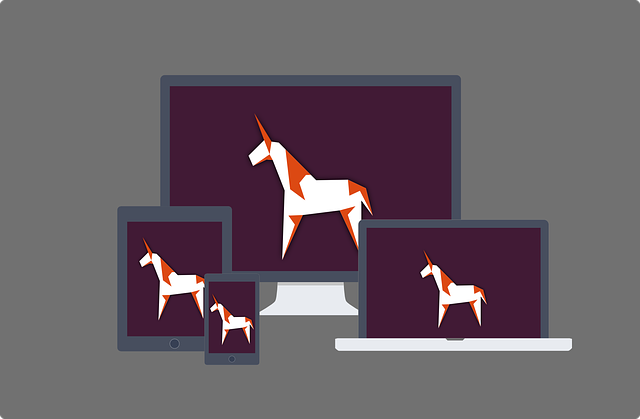ArcoLinux (also the subject of this website) is a big change for the better for anyone switching from other Linux lineage to the Arch Linux infrastructure.
ArcoLinux, based in Belgium, previously was known as “ArchMerge Linux.” It is a rolling update distribution based on Arch Linux, but it offers an unusual learning path to make assimilating into the Arch architecture a more pleasant experience.
ArcoLinux is a continuation — albeit taking a slightly different direction — of ArchMerge Linux and its family line. ArchMerge Linux was a spinoff of another breakaway distro, ArchLabs Linux. ArchMerge’s development team split with the Archlabs community to release a forked version that offered a choice of Openbox, Xfce or i3 desktops.
ArcoLinux and its breakaway relatives are a step up from most Arch Linux offerings in terms of installation and use. Arch Linux distros in general are notorious for their user-intense installations and sometimes-challenging software management processes.
In general, no Arch Linux distro is a suitable starting point for Linux newcomers. However, that reality changes a bit with ArcoLinux. You can use this distribution’s unique approach to learn the inner workings of Arch Linux’s underbelly more easily.
ArcoLinux installs without frustration into an easy-to-use Xfce desktop environment with a handful of default applications as the first step in mastering four phases of learning to use Arch-based Linux.
ArchMerge Linux’s developer, Erik Dubois, spearheaded the rebranding in February 2017. He designed his distro as part of a platform to help users learn how to use Linux in general and Arch Linux in particular.
Dubois developed a series of learning steps that enable new users to gain proficiency and comfort using Arch Linux. The goal of ArchMerge Linux remains intact in ArcoLinux. That goal is to make the distro more than just an Arch-based operating system.
The Back Story
The transformation of ArchMerge into ArcoLinux involved a bit more than mere rebranding. The most important reason behind the name change, according to DuBois’ blogs, was a shift in developmental direction. Put simply: The name no longer covered what the development was doing.
The ArchMerge distro merged Xfce, Openbox and i3 desktops. That was the initial idea behind the “ArchMerge” name. Later development produced the ArchMergeD edition and added 13 desktops to it.
Additional plans would increase the disparity between the “ArchMerge” name and the new developmental direction, so the distro’s name needed to change.
ArchMerge Linux did not fall into an inactive state. That is often what happens when developers no longer maintain a distribution. ArcoLinux did not reintroduce the same distro under new developers.
Rather, the developer replaced ArchMerge Linux with ArcoLinux to reflect the new directional path. The new or replacement distro kept much of the look and feel of its former self.
The word “Arch” translates in many languages to the words “Arco” and “Arka,” according to Dubois. The name “ArcoLinux” sounded better to the developer team. It signaled that the distro is based on Arch but is not actually the Arch Linux distro.
Dubois saw the distinction as a remix of part Arch Linux, part Arch Users Repository (AUR) and part unique ArcoLinux packages hosted in the community’s own software repository.
Differences That Matter
ArcoLinux is a training ground for those who want to learn about using Arch Linux without the frustration and blind trial-and-error approach that usually is present with Arch-family distributions. ArcoLinux has a fully functional live session that lets you try it out without installing anything.
Be careful when you first load the live session DVD or USB. You first see the Xfce desktop that is quickly covered by a full screen installer window. If you are not careful, you inadvertently will start installing ArcoLinux on your hard drive.
Avoid all potential trouble by pressing the Escape key to close the installer window. You will again see the Xfce desktop and can use it without making any changes to your existing computer system.
A few other breakaway Arch-based distros also offer a live session, but they lack the built-in learning modes that help Arch newcomers understand what happens internally beyond live session handholding.
Most Arch Linux options merely let you burn the downloaded ISO file to DVD or USB to use as an installation medium. They usually do not boot your computer into a standalone demo mode.
Building Block Approach
ArcoLinux is a full-featured distribution. You start out with a basic installation built around the Xfce desktop. You do not get bogged down with figuring out what desktop to select from the other available desktops, including Awesome, Bspwm, Budgie, Cinnamon, Deepin, Gnome, i3, Mate, Openbox, Plasma and Qtile. More are planned down the line.
Although the initial ISO contains Openbox and i3 environments, you must work your way through the learning projects to discover how to install them.
The right-click secondary menu that is a staple in the Xfce desktop lacks a section to access installed applications in ArcoLinux.
The projects progress through four building phases. Phase 1 is the starting point with the default Xfce desktop. Get the ArcoLinux ISO version. It installs with a graphical installer for ease and comfort.
Phases 2 and 3 get you started building a more complete computing system from minimal scratch. Get the ArcoLinuxD.ISO version, which includes scripts that enable you to install any desktop and application.
Phase 4 gives you many more ISO download options. It is here that you get access to installation files for a specific desktop choice. This phase is named “ArcoLinuxB.” The file name includes a dash and the desktop name. For example, arcolinuxb-gnome.
At this top phase level you have additional choices of installation medium. You can select full, bare or minimal. You also can choose between Linux kernel ISOs and Linux-LTS kernel ISOs for long-term support.
Choosing the Minimal ISO installs fewer default software packages. You then manually install only the applications you want on your system.
With the Bare ISO you’ll have almost no default software installed. The goal is to have the least number of software packages on your system.
ArcoLinux’s default Xfce desktop lets you add numerous screen applets using the Conky Manager tool.
Getting Going
The developers provide some 29 different ISO combinations. ArcoLinux also provides various video tutorials to support its emphasis on learning and acquiring Linux skills.
However, do not look for the download links on the two ArcoLinux websites. Instead, you will find only a link to two different locations on Sourceforge.
Get ArcoLinux and ArcoLinuxD ISO download links here.
Get ArcoLinuxB ISO download links here.
AroLinux is a rolling upgrade distro, so system updates are pushed to the computer as soon as they are ready. This means you will not have to download new ISO files to install newer releases. The latest ISO files were released on Sept. 13.
Bottom Line
I like rolling up my sleeves to tinker with a variety of Linux distros, but some Linux families require more effort to set up and maintain than others.
Seasoned Linux users who like the higher level of hands-on control that Arch systems provide rave about Arch’s superior reliability. Typical Linux users, however, often just want a configurable desktop that they can use without complicated setup and hands-on system maintenance demands.
The building blocks approach ArcoLinux offers lets you start with a basic, easy-to-use desktop environment with enough default software to get you started. Then it lets you move through higher-level phases of functionality to master the Arch Linux platform.
This method is not well suited for all Linux users, but it has several advantages if you are curious about using Arch-based Linux distros.
Want to Suggest a Review?
Is there a Linux software application or distro you’d like to suggest for review? Something you love or would like to get to know?
Pleaseemail your ideas to me, and I’ll consider them for a future Linux Picks and Pans column.
And use the Reader Comments feature below to provide your input!





